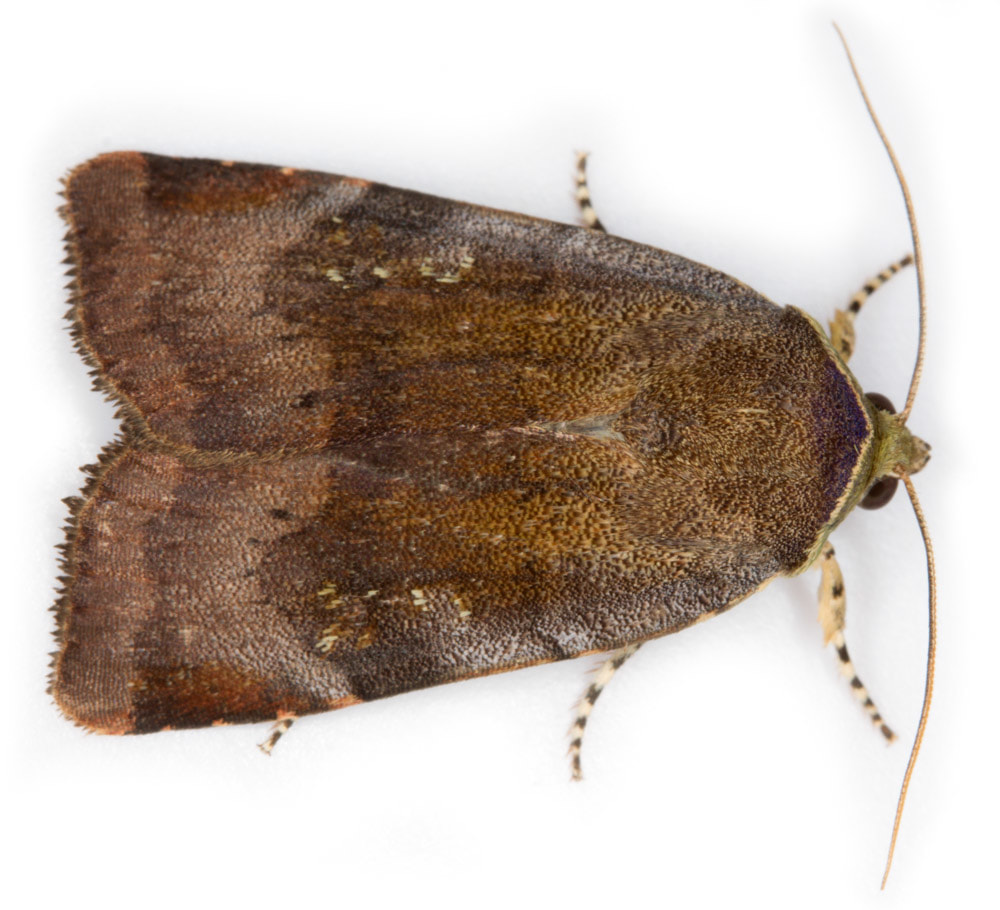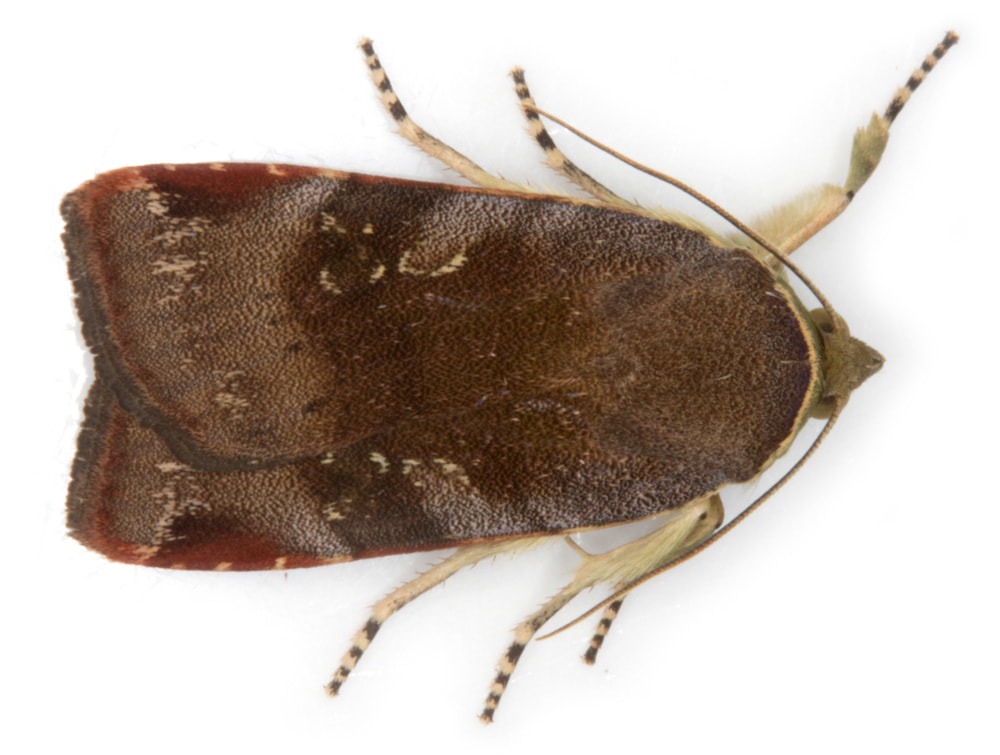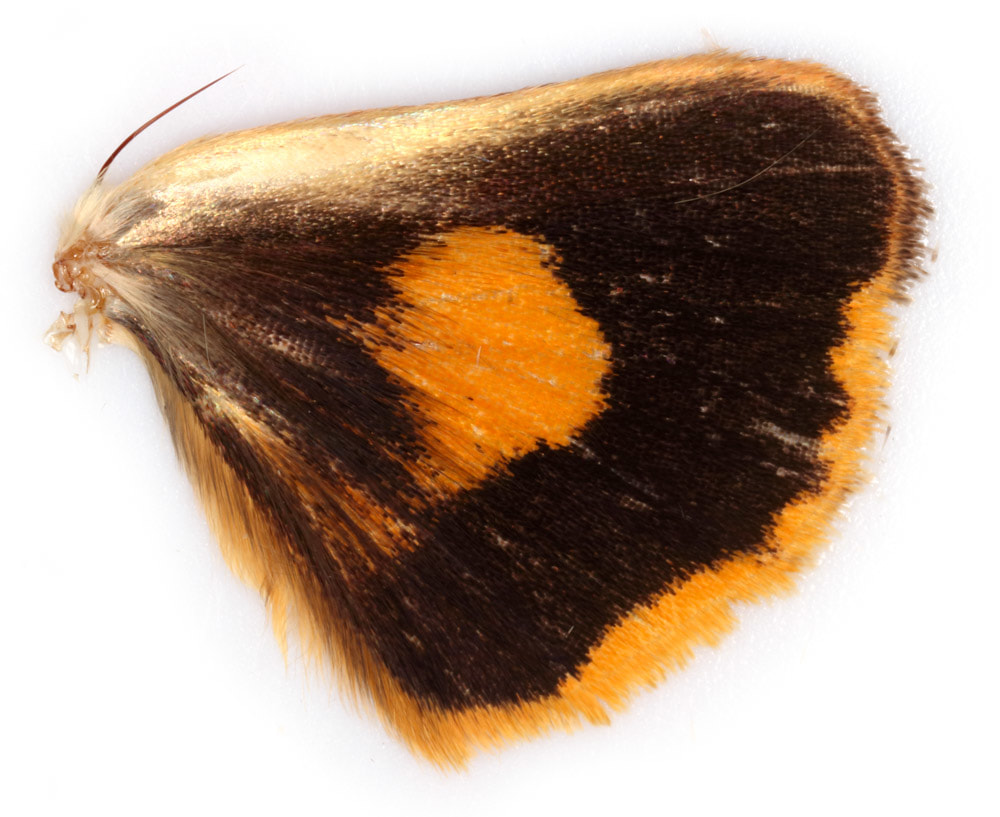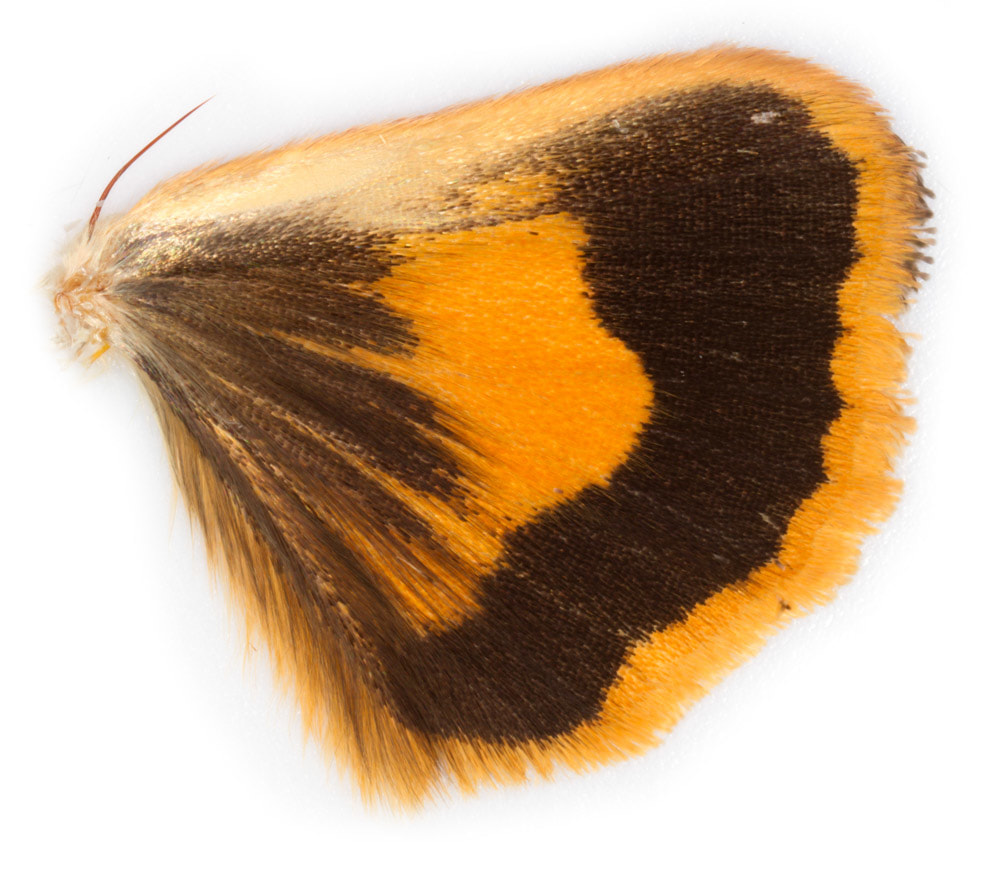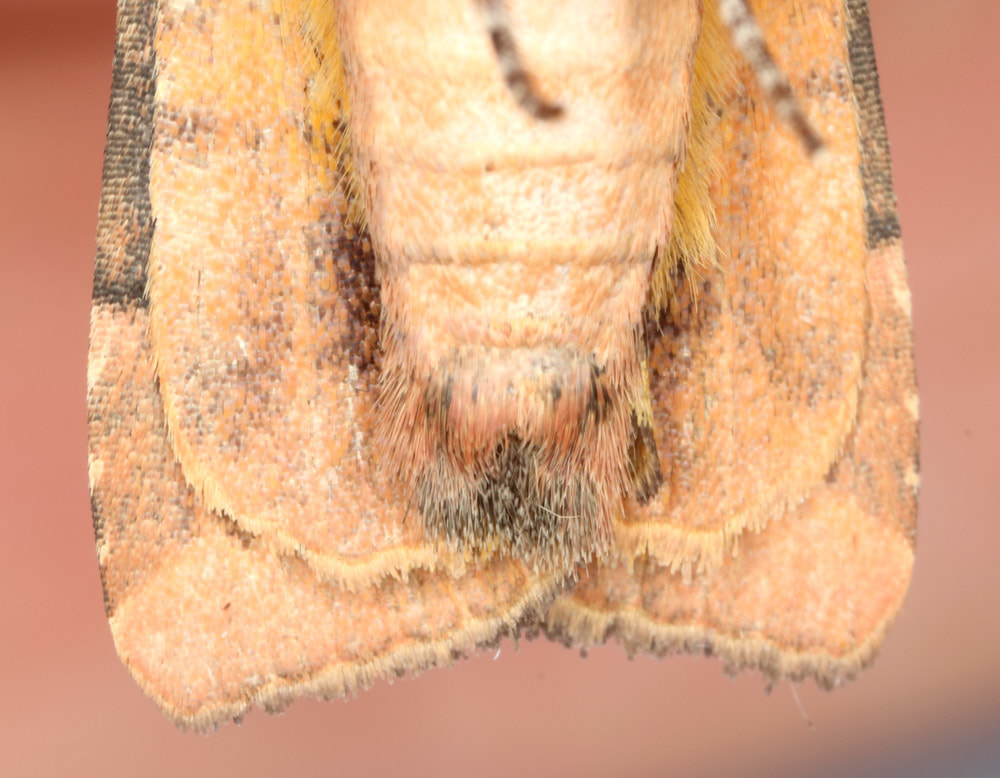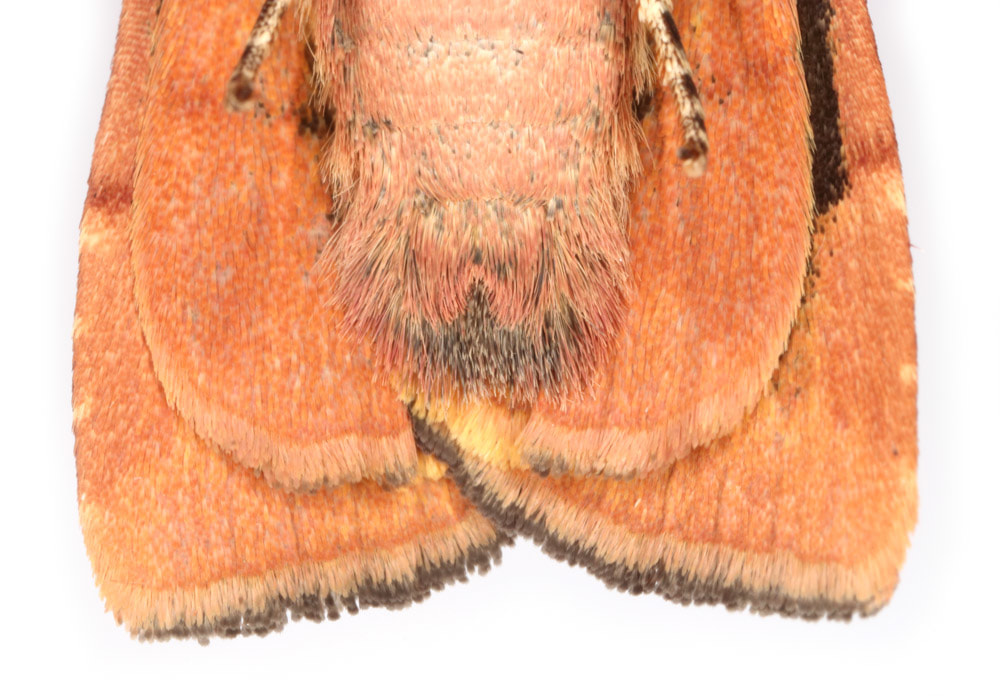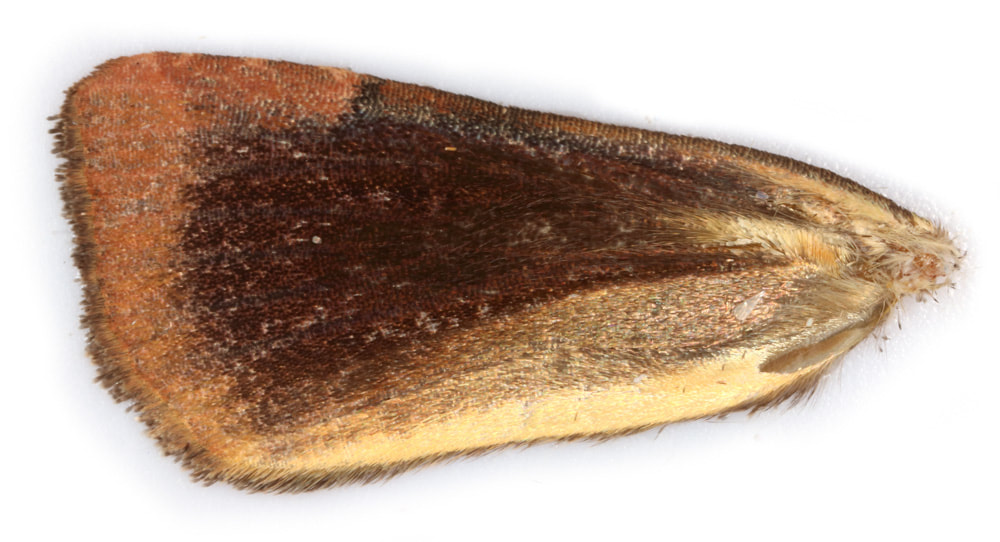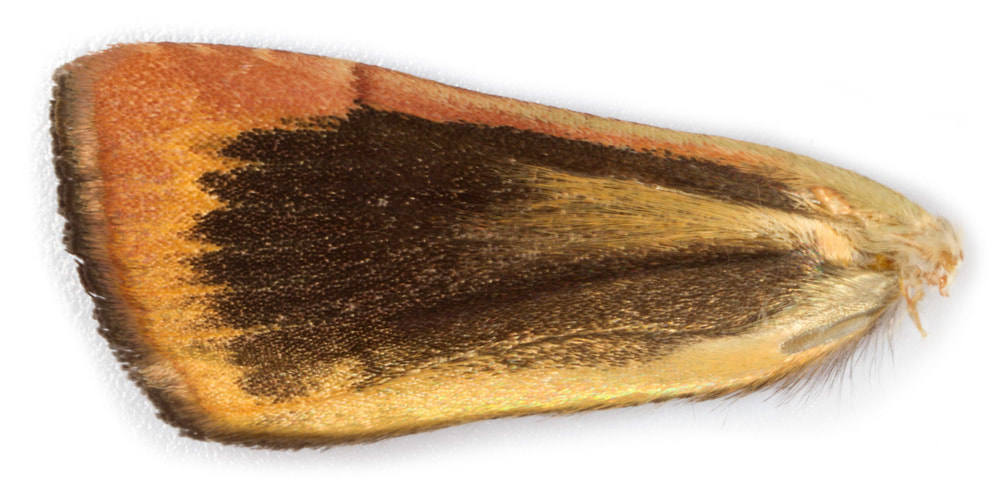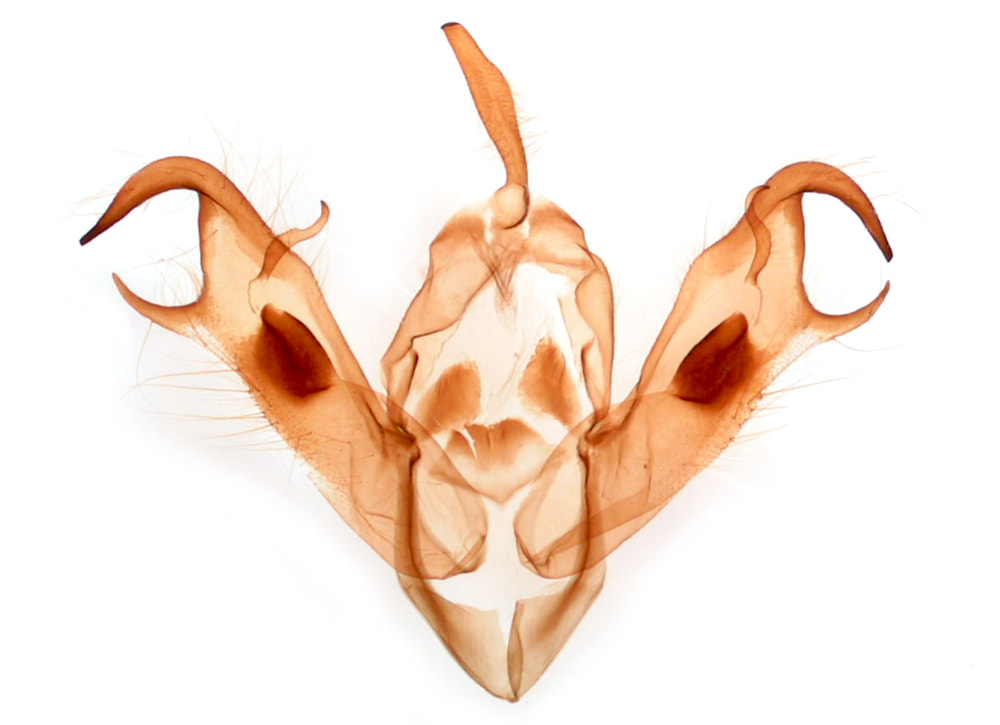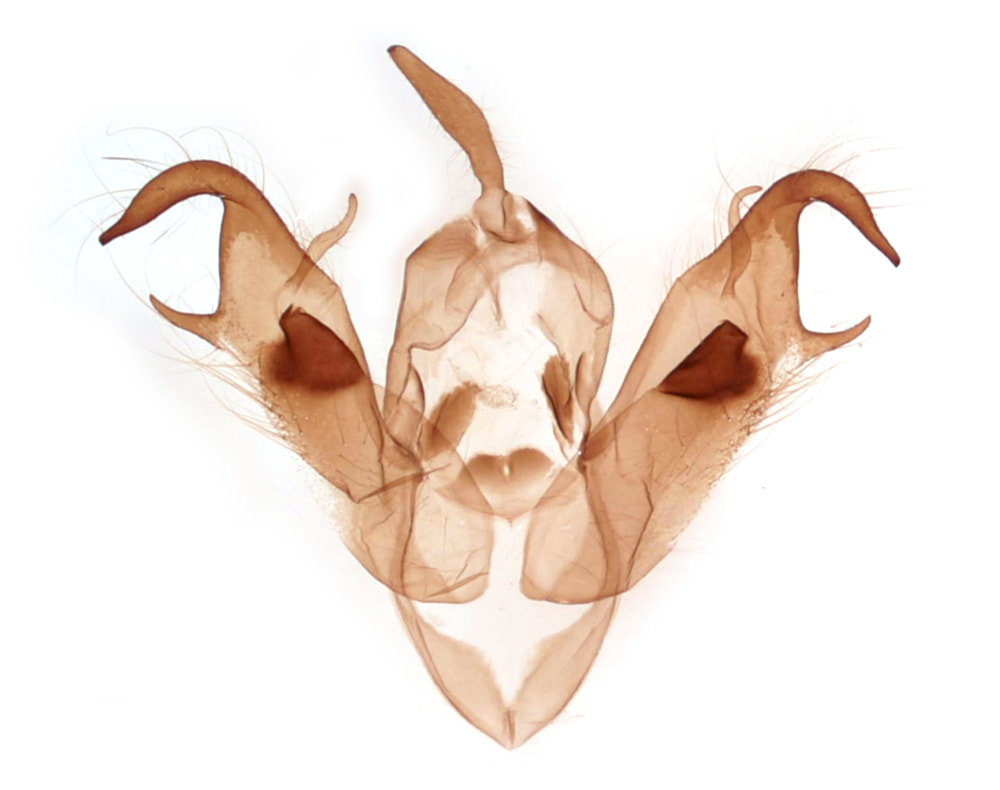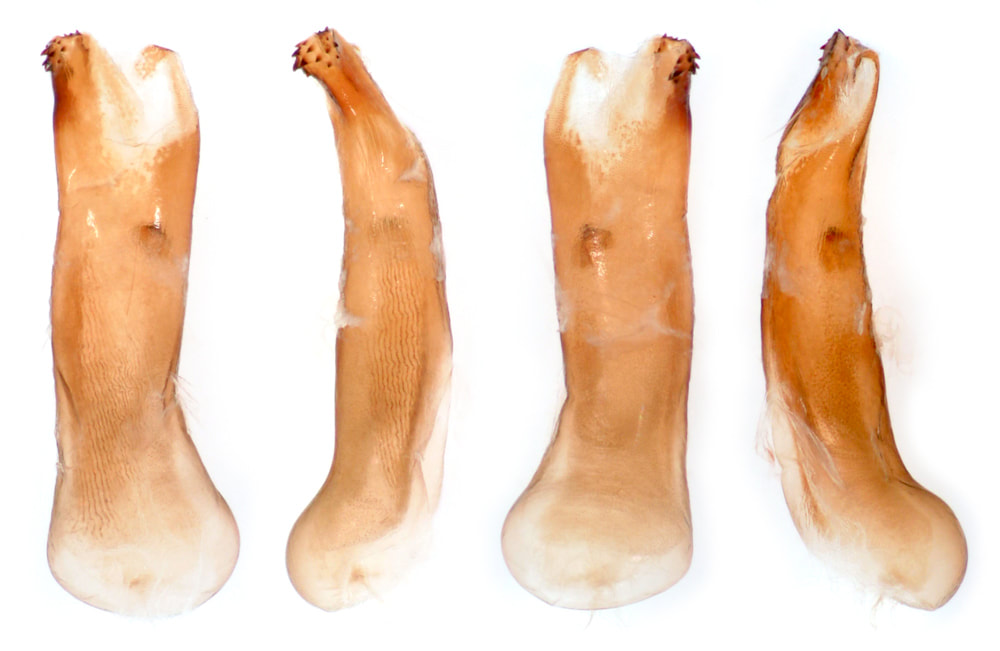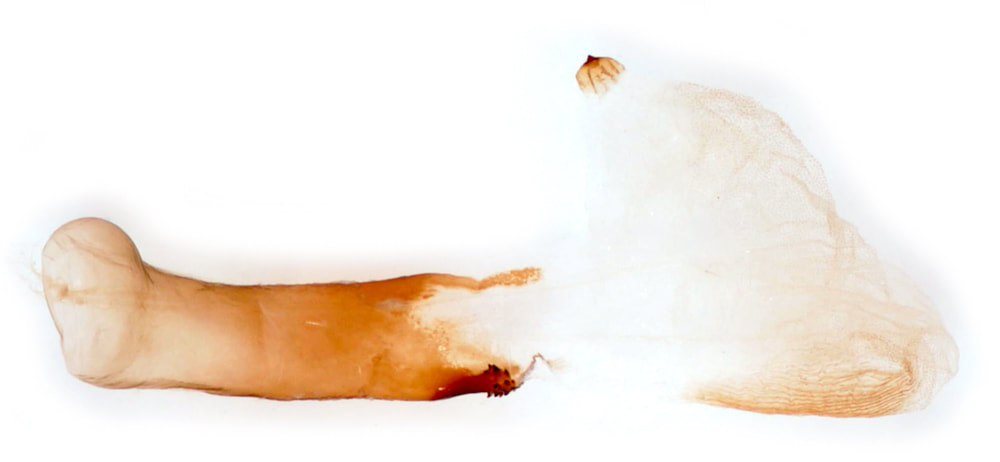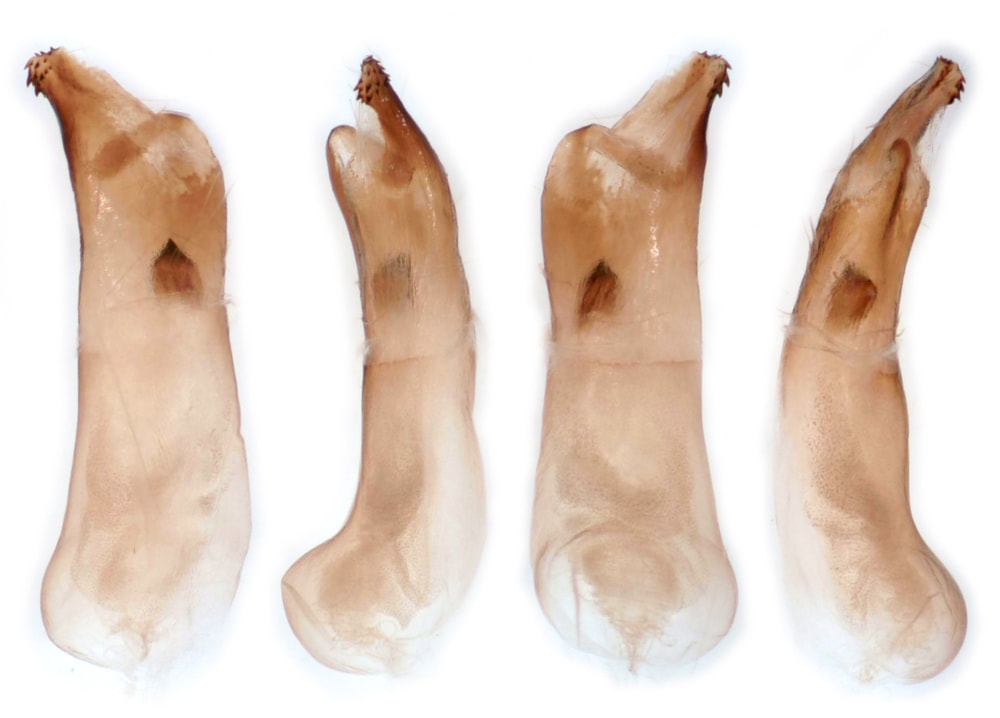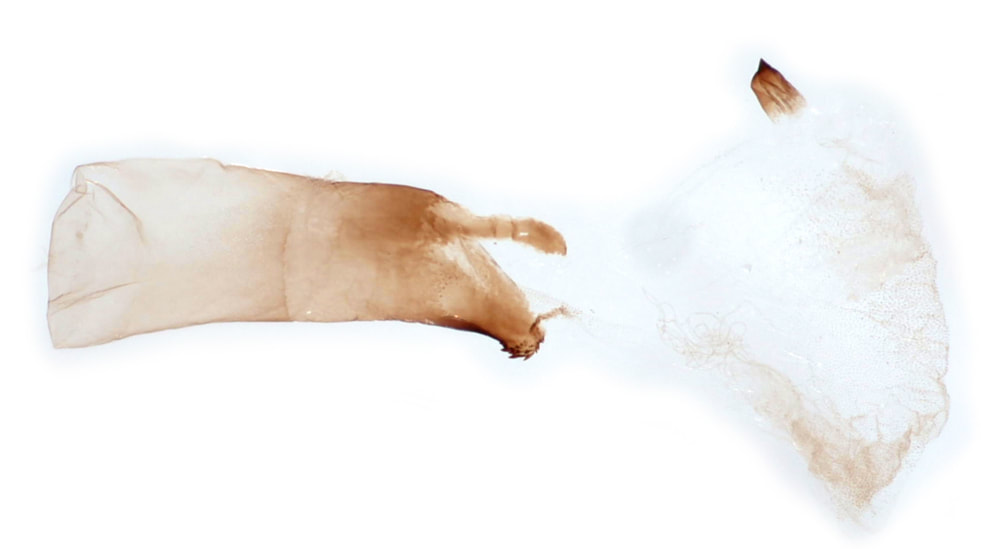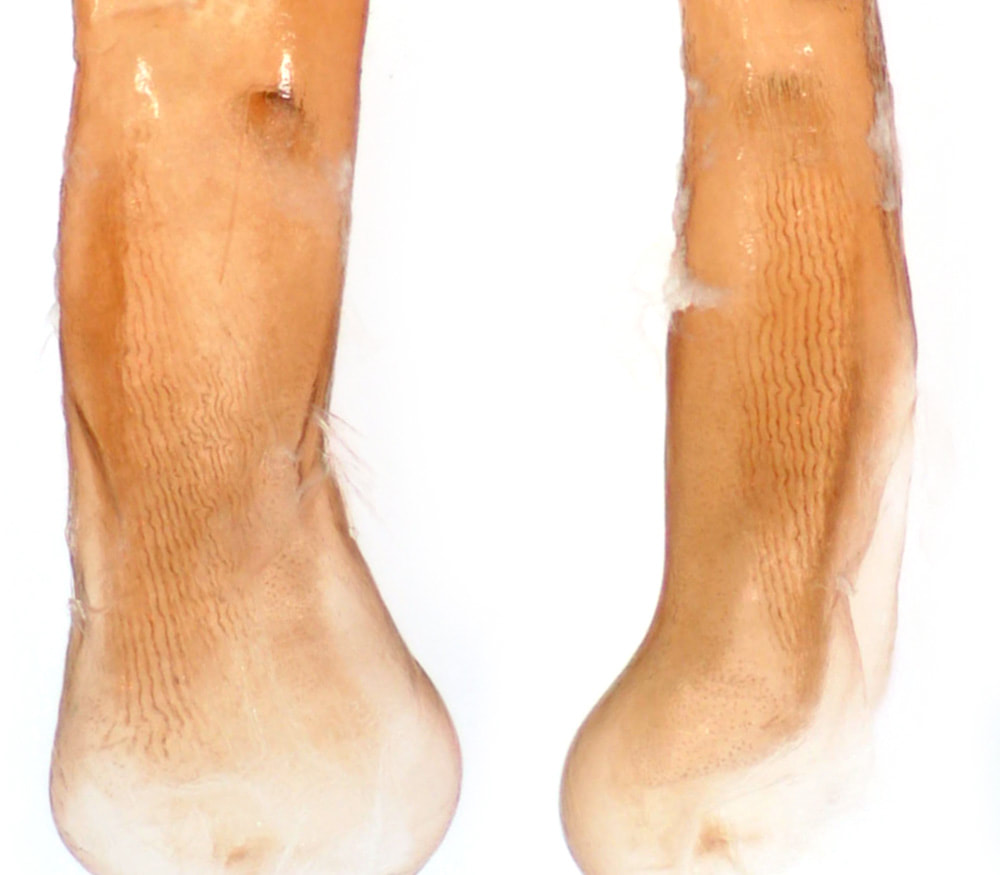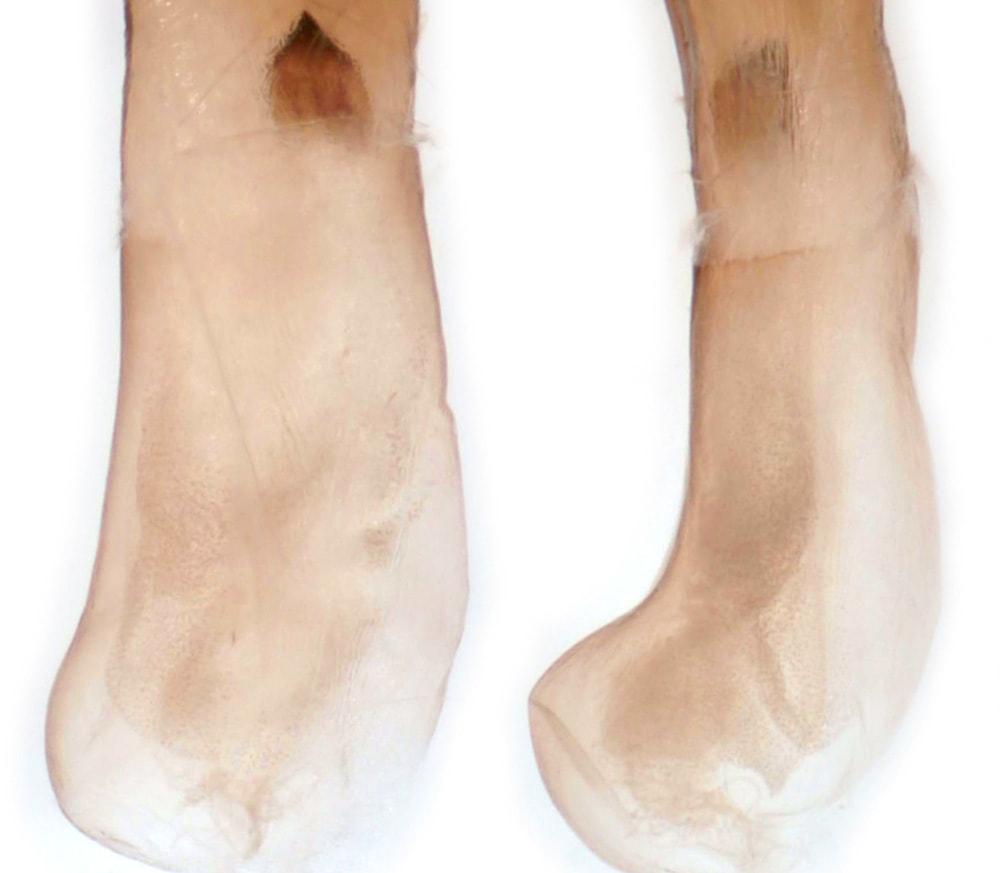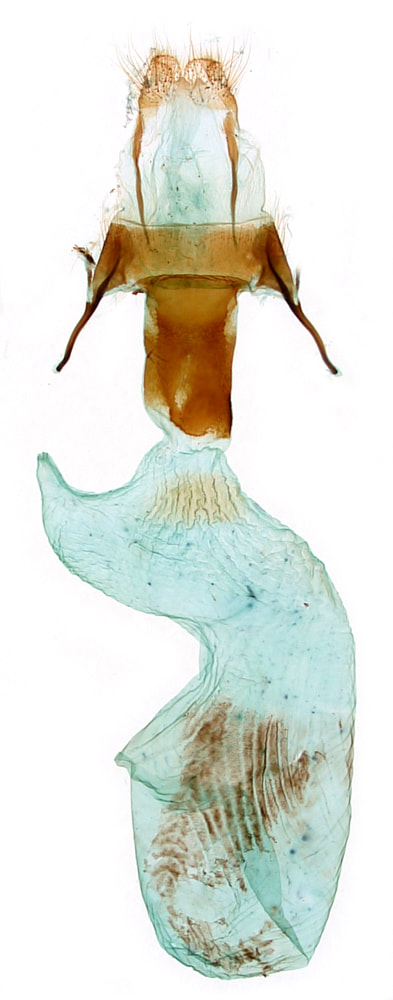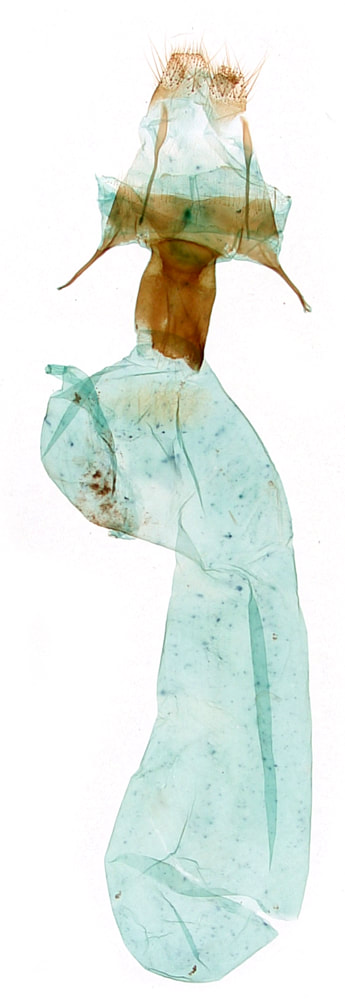Noctua janthina (Langmaid's Yellow Underwing) vs
|
Separation of these two species is covered by the Difficult Species Guide and at Moth DIssection.
There are no reliable forewing upperside features.
There are no reliable forewing upperside features.
Hindwing upperside
This provides the best identification feature: In N.janthe it appears bright yellow with a broad subterminal fascia, and a dorsal blackish smudge continuing to the wing base, the costa being largely yellow. In N.janthina the black subterminal fascia is continued along the costa and the blackish dorsobasal smudge is darker and more extensive so that the hindwing appears black with a central yellow spot, rather than yellow with a black border. This hindwing difference is more apparent in male than female N.janthina (implying sexual dimorphism in N.janthina).
This provides the best identification feature: In N.janthe it appears bright yellow with a broad subterminal fascia, and a dorsal blackish smudge continuing to the wing base, the costa being largely yellow. In N.janthina the black subterminal fascia is continued along the costa and the blackish dorsobasal smudge is darker and more extensive so that the hindwing appears black with a central yellow spot, rather than yellow with a black border. This hindwing difference is more apparent in male than female N.janthina (implying sexual dimorphism in N.janthina).
|
Forewing underside
Both species show an extensive blackish basal area and a brownish terminal band. In N.janthe the distal margin of the black basal patch extends between veins as teeth and the terminal colour is yellow-brown; in N.janthina the distal margin is smooth and the terminal colour dull brown. DSG suggests that these forewing underside features do not provide absolute separation of the species. Not mentioned in the references, but when selecting specimens for confirmation of identity as N.janthina we used the underside of the forewing costa as what proved to be a reliable guide. In both species there is a narrow (postmedian) line crossing the underside of the costa at ~2/3; in N.janthe the costa has the same colour on both proximal and distal sides of this line; in N.janthina the costa is distinctly darker on the proximal side of the line. This feature is quite easy to see with the moth in a specimen pot (see image right). |
With respect to the forewing underside costal feature subsequent investigation of 10s of specimens thus far suggests:
1) Where there is a clear contrast with the costal margin being dark proximal to the postemedian line the specimen will be male N.janthina.
2) All reasonably fresh male N.janthina show some degree of contrast with respect to this feature, but it is not always clear (when worn the apical portion of the costal margin becomes dark so that the contrast is lost)
3) Where the colour is the same either side of the postmedian line the specimen may be male or female N.janthe or female N.janthina
1) Where there is a clear contrast with the costal margin being dark proximal to the postemedian line the specimen will be male N.janthina.
2) All reasonably fresh male N.janthina show some degree of contrast with respect to this feature, but it is not always clear (when worn the apical portion of the costal margin becomes dark so that the contrast is lost)
3) Where the colour is the same either side of the postmedian line the specimen may be male or female N.janthe or female N.janthina
Male genitalia
Both DSG and Moth Dissection describe and illustrate the only genital difference as affecting the basal diverticulum of the everted aedeagus, the diverticulum being narrow in N.janthina and broad in N.janthe. However, this feature is variable within each species and intermediates are found. I have so far been unable to demonstrate this feature in any convincing way.
Both DSG and Moth Dissection describe and illustrate the only genital difference as affecting the basal diverticulum of the everted aedeagus, the diverticulum being narrow in N.janthina and broad in N.janthe. However, this feature is variable within each species and intermediates are found. I have so far been unable to demonstrate this feature in any convincing way.
Female genitalia:
Both DSG and Moth Dissection describe and illustrate a longer and narrower corpus bursae in N.janthe. In the specimens shown in DSG and at Moth Dissection the ratio of the length:breadth of the corpus bursae (length measured from the anterior sclerotised margin of the ductus bursae to the apex of the corpus bursae; breadth at widest point anterior to the bend) gives 3.6-4.5 in N.janthina and 5.5-5.7 in N.janthe. For my preparations the ratios are 2.5 & 2.7 for N.janthina and 3.2 and 3.4 for N.janthe. I have no clear explanation for why preparations at Moth Dissection appear longer and narrower than mine.
In N.janthe (and N.tertia, if this is a valid taxon) in the natural position there is a pleat (directed ventrally then anteriorly) at the junction between the ductus and corpus bursae. This pleat was not present in the N.janthina specimens I have examined. This raises 2 sequelae:
1. Measuring the length of the corpus bursae in N.janthe requires this pleat to be fully unfolded in a set specimen.
2. If the pleat is present in all N.janthe and absent in all N.janthina this could provide a means of distinguishing the species - but this would not be demonstrable in slide preparations of the genitalia. I need to examine more specimens to confirm this.
Both DSG and Moth Dissection describe and illustrate a longer and narrower corpus bursae in N.janthe. In the specimens shown in DSG and at Moth Dissection the ratio of the length:breadth of the corpus bursae (length measured from the anterior sclerotised margin of the ductus bursae to the apex of the corpus bursae; breadth at widest point anterior to the bend) gives 3.6-4.5 in N.janthina and 5.5-5.7 in N.janthe. For my preparations the ratios are 2.5 & 2.7 for N.janthina and 3.2 and 3.4 for N.janthe. I have no clear explanation for why preparations at Moth Dissection appear longer and narrower than mine.
In N.janthe (and N.tertia, if this is a valid taxon) in the natural position there is a pleat (directed ventrally then anteriorly) at the junction between the ductus and corpus bursae. This pleat was not present in the N.janthina specimens I have examined. This raises 2 sequelae:
1. Measuring the length of the corpus bursae in N.janthe requires this pleat to be fully unfolded in a set specimen.
2. If the pleat is present in all N.janthe and absent in all N.janthina this could provide a means of distinguishing the species - but this would not be demonstrable in slide preparations of the genitalia. I need to examine more specimens to confirm this.
All images © Chris Lewis
Page published 31/07/2017 | Text amended and female genital images added 22/12/2023
